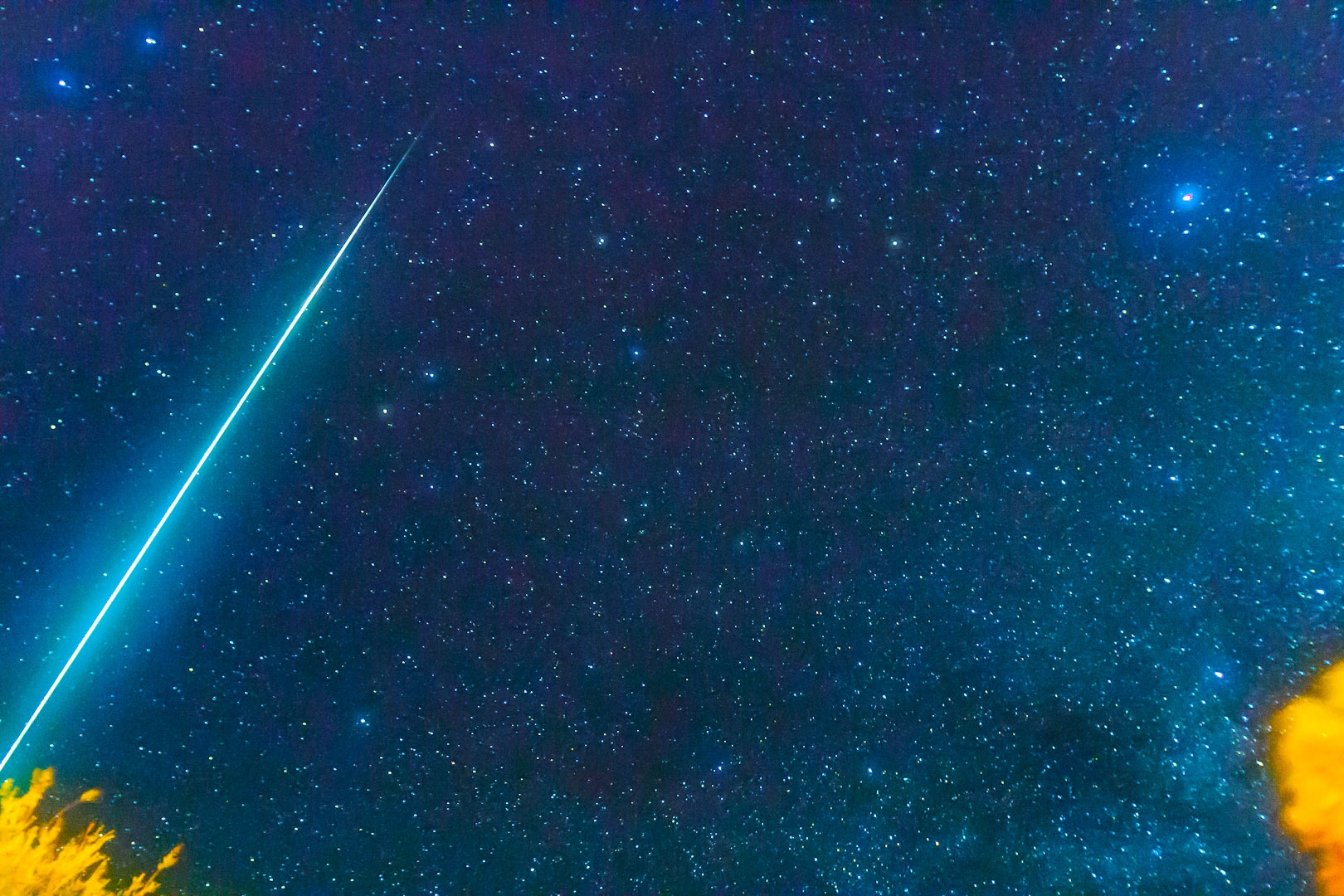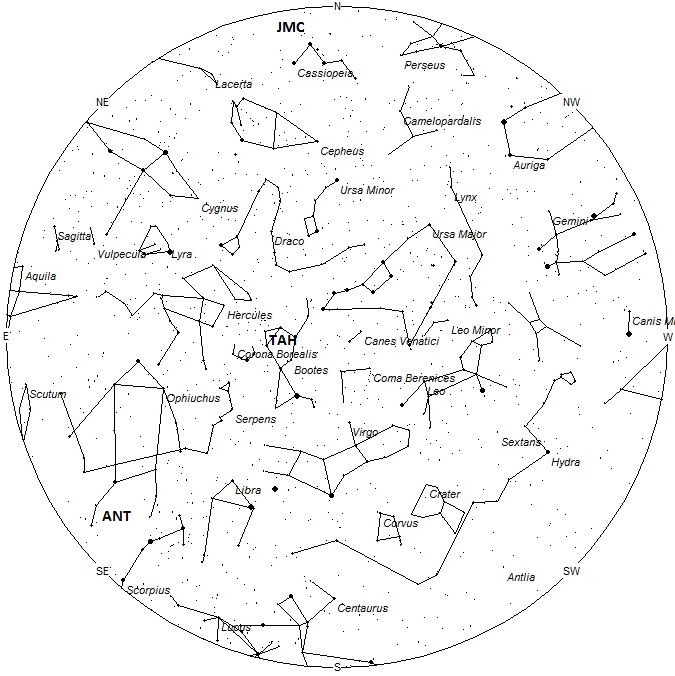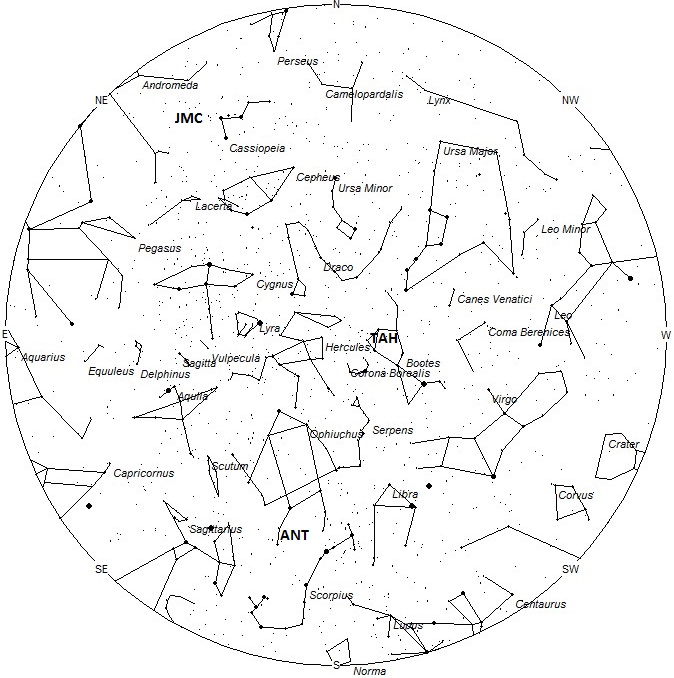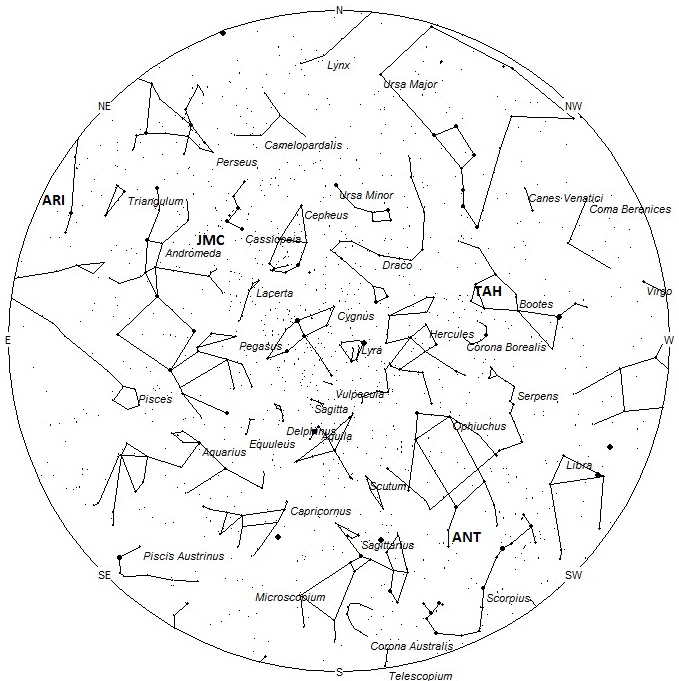
During this period the moon will reach it’s full phase on Tuesday May 29th. At that time the moon will be located opposite the sun and remain above the horizon most of the night. This weekend the waxing gibbous moon will set during the late morning hours, giving a small window of opportunity to view meteor activity between moonset and the start of morning twilight. The estimated total hourly meteor rates for evening observers this week is 2 as seen from mid-northern latitude (45N) and 3 from the southern tropics (25S). For morning observers the estimated total hourly rates should be near 3 as seen from mid-northern latitudes (45N) and 5 from the southern tropics (25S). The actual rates will also depend on factors such as personal light and motion perception, local weather conditions, alertness and experience in watching meteor activity. Rates during evening hours are reduced due to moonlight. Note that the hourly rates listed below are estimates as viewed from dark sky sites away from urban light sources. Observers viewing from urban areas will see less activity as only the brighter meteors will be visible from such locations.
The radiant (the area of the sky where meteors appear to shoot from) positions and rates listed below are exact for Saturday night/Sunday morning May 26/27 These positions do not change greatly day to day so the listed coordinates may be used during this entire period. Most star atlases (available at science stores and planetariums) will provide maps with grid lines of the celestial coordinates so that you may find out exactly where these positions are located in the sky. A planisphere or computer planetarium program is also useful in showing the sky at any time of night on any date of the year. Activity from each radiant is best seen when it is positioned highest in the sky, either due north or south along the meridian, depending on your latitude. It must be remembered that meteor activity is rarely seen at the radiant position. Rather they shoot outwards from the radiant so it is best to center your field of view so that the radiant lies near the edge and not the center. Viewing there will allow you to easily trace the path of each meteor back to the radiant (if it is a shower member) or in another direction if it is a sporadic. Meteor activity is not seen from radiants that are located far below the horizon. The positions below are listed in a west to east manner in order of right ascension (celestial longitude). The positions listed first are located further west therefore are accessible earlier in the night while those listed further down the list rise later in the night.
These sources of meteoric activity are expected to be active this week.
Details of each source will be available next week when observing conditions will be more favorable.
| SHOWER | DATE OF MAXIMUM ACTIVITY | CELESTIAL POSITION | ENTRY VELOCITY | CULMINATION | HOURLY RATE | CLASS |
| RA (RA in Deg.) DEC | Km/Sec | Local Daylight Saving Time | North-South | |||
| tau Herculids (TAH) | Jun 02 | 15:00 (225) +39 | 15 | 00:00 | <1 – <1 | III |
| Anthelion (ANT) | – | 17:12 (258) -23 | 30 | 02:00 | 1 – 2 | II |
| June mu Cassiopeiids (JMC) | – | 00:16 (004) +53 | 42 | 09:00 | <1 – <1 | IV |
| Daytime Arietids (ARI) | Jun 07 | 02:16 (034) +22 | 41 | 11:00 | <1 – <1 | IV |
 American Meteor Society
American Meteor Society



Friday night June 1, 2018 while traveling late at night up I-84 we saw a neon lime green orb fall straight down in the sky. It didn’t shoot across the sky like a meteor does. It appeared & fell straight down and then disappeared without looking like a meteorite does when it burns out. We were between Pendleton and La Grande in Oregon. What was that????
Becky and All,
Meteors can be fast or slow, depending on the angle in which they strike the earth’s atmosphere. Your observation on June 1st was that of a slow meteor with a high composition of nickel, which caused the green color. Meteors that occur prior to midnight tend to be slow and those seen during the morning hours tend to be fast.
I hope this helps!
Robert Lunsford